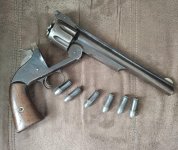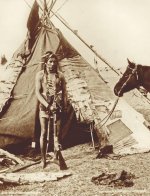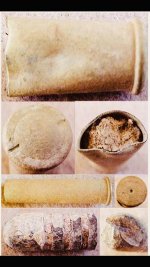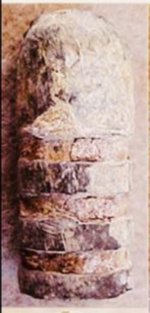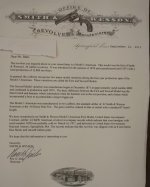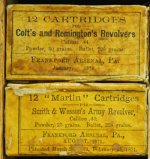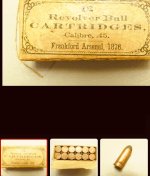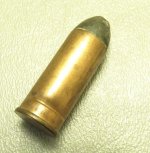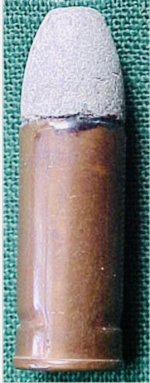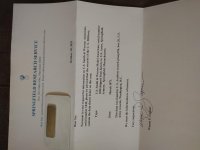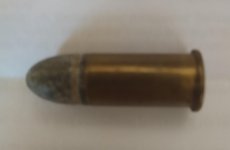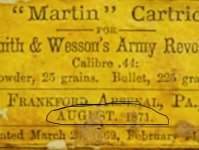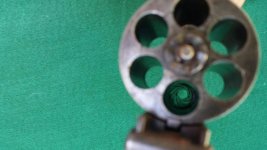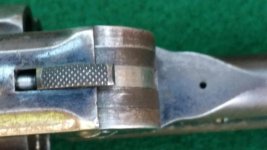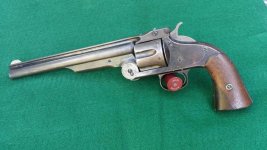new2S&W
Member
It's been awhile since I posted here about the progress made on my original US marked first model American.
As a reminder this pistol first became known to me in 1967 when my dad brought it from Saskatchewan Canada following the death of his father. We had no idea what it was or where my grandfather may have acquired it. Being a devout Christian who did not believe in weapons or violence of any kind, my dad figured he had probably taken it as barter from one of his tenants who rented one of his houses in the city. I'm told my grandfather was sympathetic to the plight of First Nation members and, as such he offered his houses at reasonable rental rates.
It is conceivable that the gun had come into the possession of an "Indian" who had fled the LBH area with Chief Sitting Bull following the battle.
The recent event that raises my hopes to pursue the possibility that this gun may have been at LBH, either in possession of a soldier or Lakota warrier, is that I have recently found some rare .44 American black powder cartridges that are coming my way
I plan to record the test firing of the gun and recovery of the bullets and spent cartridges to allow comparison with those found at the battle site. Up to 3 separate .44 American guns were determined to be fired at the battle.
More later as it becomes available.
As a reminder this pistol first became known to me in 1967 when my dad brought it from Saskatchewan Canada following the death of his father. We had no idea what it was or where my grandfather may have acquired it. Being a devout Christian who did not believe in weapons or violence of any kind, my dad figured he had probably taken it as barter from one of his tenants who rented one of his houses in the city. I'm told my grandfather was sympathetic to the plight of First Nation members and, as such he offered his houses at reasonable rental rates.
It is conceivable that the gun had come into the possession of an "Indian" who had fled the LBH area with Chief Sitting Bull following the battle.
The recent event that raises my hopes to pursue the possibility that this gun may have been at LBH, either in possession of a soldier or Lakota warrier, is that I have recently found some rare .44 American black powder cartridges that are coming my way
I plan to record the test firing of the gun and recovery of the bullets and spent cartridges to allow comparison with those found at the battle site. Up to 3 separate .44 American guns were determined to be fired at the battle.
More later as it becomes available.
Attachments
Last edited:

